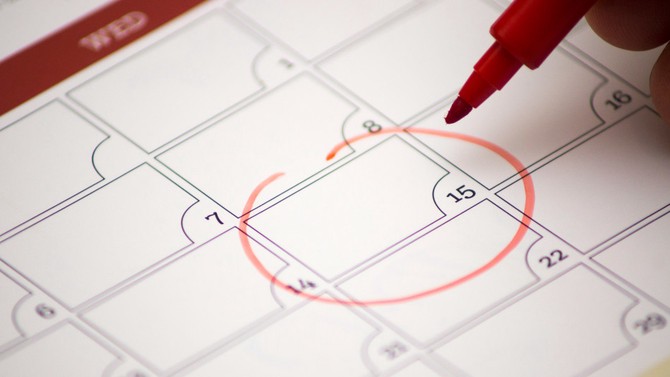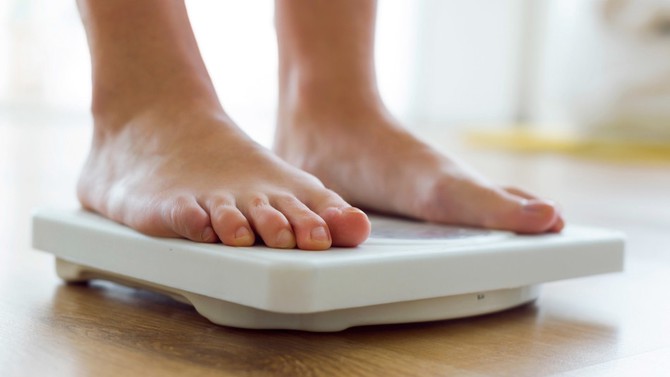6 Big Mistakes People Make When They Try to Lose Weight
Experts share the most common missteps they see patients and clients make–and the smarter choices that'll help you reach your goal.
By Emma Haak

Photo: Tadas_Zvinklys/istockphoto
Mistake #1: Deciding on Sunday to Make a Change on Monday
Why it's wrong: "The trends in your life–Do you always snack at night? Eat out more than you think you do? Or really get as much activity as you thought?–should inform the changes you make to lose weight," says Holly Lofton, MD, an assistant professor of medicine and surgery and director of the medical weight management program at NYU Langone Medical Center.
What to do instead: Before starting a weight-loss plan, try this at-home version of what Lofton has her patients do. Keep a food diary for three to five days (include at least one weekend day) and wear an activity tracker to see how much you're moving. Then look for places where you can make changes–for example, if you see that you eat a tiny lunch then overeat at dinner, a bigger lunch is a good place to start.
Continuing to track your diet and activity can also help you identify reasons why your weight loss might have stalled, says Scott Cunneen, MD, a co-director at the Weight Loss Center at Cedars-Sinai in Los Angeles. (Cunneen always has patients do a food and activity diary when they regain weight, if they haven't already been keeping track.) "You can look at the food diary and see that maybe you're eating the right foods but eating too much of them, or you weren't exercising as much as you were a month ago when you were losing weight."

Photo: nensuria/istockphoto
Mistake #2: Not Anticipating This Plateau
Why it's wrong: You can hit a roadblock after dropping just 5 percent of your body weight, says Bartolome Burguera, MD, the director of obesity programs at Cleveland Clinic. At that point, your body starts secreting hormones, like those that increase appetite, in an attempt to get you back to the weight you started at. "Your body also becomes more efficient, doing the same daily functions with less energy, so you burn fewer calories at rest."
What to do instead: Have a plan in place for what to do when you hit 5 percent weight loss. It could involve increasing your exercise time, adding resistance work if you're not already doing it, or cutting 100 to 200 calories per day until you get over the hump.

Photo: przemekklos/istockphoto
Mistake #3: Waiting All Week For Your Cheat Meal
Why it's wrong: "When you really want something, it's better to eat it sooner rather than later," says Burguera. Otherwise, you'll likely be so fixated on the food you're craving that, when you finally have it, you'll go overboard and undo the week of healthy eating that led up to the cheat. That's especially true if the cheat involves alcohol, says Jennifer McDaniel, RDN, a spokesperson for the Academy of Nutrition and Dietetics. "You won't feel good the next day, and you probably won't snap back to your plan when you're hungover."
What to do instead: Incorporate something you'll look forward to eating every single day, says McDaniel. If the thing you really want isn't so nutritious (hello, mozzarella sticks), have just a tiny bit instead of a whole serving. "Once you start eating in this healthier pattern, if you do have that huge cheat day or meal, you won't feel good about it afterwards, and that can be great negative feedback to help you stay on track," McDaniel adds.

Photo: joannatkaczuk/istockphoto
Mistake #4: Trying to Travel Back to Your 20s
Why it's wrong: "If you use the same diet you did before and expect to get the same result, you'll be disappointed," says Lofton, who notes that this is the biggest mistake she sees in her practice. Your body wants to stay at the weight it's at, and actively fights against weight loss (see the research about what happens to The Biggest Loser contestants after the show). It also learns from what happened in the past. Plus, if you've regained the weight you originally lost, odds are the diet you were on wasn't sustainable, and not something you should be trying again anyway.
What to do instead: Talk to your doctor about a weight-loss plan that you can stick with long term, and explain what you've tried in the past so you know what to avoid.

Photo: Vesna Andjic/istockphoto
Mistake #5: Keeping Your Goals to Yourself
Why it's wrong: Weight loss is hard, and support will make it easier. Family and friends can be great people to lean on, says McDaniel, but of course, watch out for those who aren't really looking out for you (like the friend who's always encouraging you to "have just one more" of everything). The best bet may be to reach out to people who are also trying to lose weight. Burguera leads weight-loss groups at the Cleveland Clinic and notes that "the success that happens here isn't because of the doctors–it's because of the support that the group provides" and that patients are always sharing honest advice about what's worked for them and what hasn't.
What to do instead: Find a community of people you can share your weight loss with. Lots of food-tracking and weight-loss apps include ways to connect with other users, or ask your doctor if their office ever organizes get-togethers for patients trying to lose weight.

Photo: Ridofranz/istockphoto
Mistake #6: Eating Like a Much Smaller Version of Yourself
Why it's wrong: For many reasons. First, consuming too few calories per day isn't sustainable, so you're setting yourself up to overeat at night and quit your plan sooner, says McDaniel. Second, "If you chronically under-eat, you slow down your resting metabolic rate, or how many calories you burn when you're doing nothing." Lastly, when you lose weight from calorie deprivation, you're more likely to lose lean tissue, says McDaniel, which means that if you do gain some weight back, it's most likely to be fat, not muscle.
What to do instead: A moderately active woman needs to eat somewhere between 1,400 and 1,800 calories per day to lose weight, says McDaniel. If you have an underactive thyroid or are on the short side, you could go down to 1,200, she adds. Talk to your doctor or a nutritionist about the number they'd recommend for you.
Published 10/24/2016

